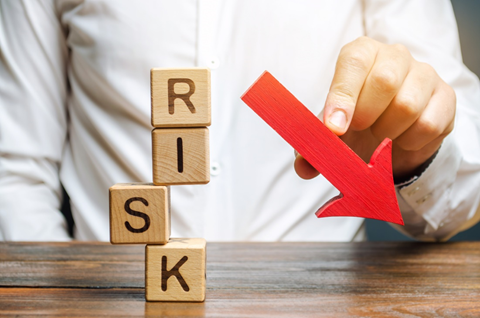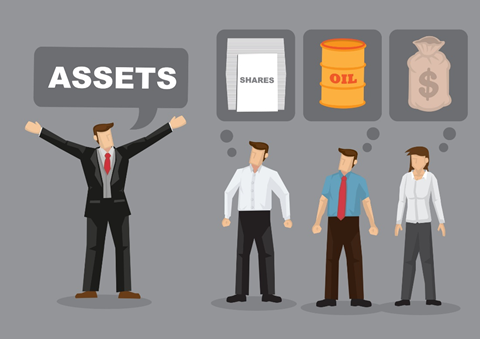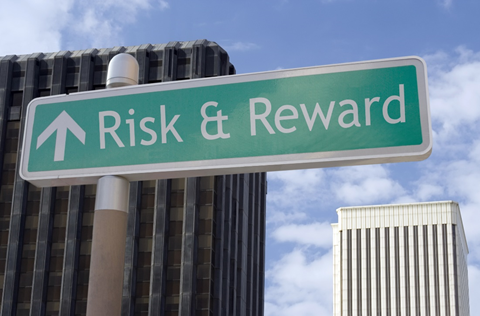What do you mean by Risk Asset?
Risk assets are those assets that either has an uncertain future or where the return from an investment is not guaranteed. In risk assets, a high degree of risk is involved. Price volatility is also high in risk assets. Some of the examples of risk assets are equities, high-yield bonds, commodities and real estate.
In reference to the banks, risk-free assets are assets owned by a bank or any other financial institution that fear the risk of change in their value due to factors such as fluctuating interest rates, repayment risk, etc.
In bankrupt companies or any financially stretched company, the risk-free asset can also refer to equity capital. In such a situation, the bondholders and other lenders of the said company will have greater claims than the firm's shareholders.
Summary
- Risk assets are those assets that either have an uncertain future or are more vulnerable to risks.
- In risk assets, price volatility is high. The examples can be currencies, real estate, among others.
- In reference to the banks, risk-free assets are owned by a bank or any other financial institution.
- These bank assets fear the risk of change in their value due to several factors such as fluctuating interest rates, repayment risk, etc.
Frequently Asked Questions (FAQs)
Do the investors have an appetite for Risk Assets?
Investors' appetite for risk assets fluctuates a lot over time. For example, from 2003-2007, the investors displayed a massive appetite for risk assets. This drastic demand led to an increase in most assets which were previously described as an above-average risk. These included currencies of commodity exporters like Australia & Canada, emerging markets, and subprime mortgage-backed securities.
During the global financial crisis of 2008-2009, an extreme level of risk aversion was witnesses among the investors.

Image Source: © Andreyyalansky19 | Megapixl.com
What is the impact of Risks Assets on a portfolio?
After an increase in the value of an unregulated cryptocurrency for a specified period, there is a subsequent downfall in its value. Therefore, it is termed a fluctuating risk asset. For example, the value of cryptocurrency saw rapid growth after an increase in the usage of virtual currencies like Bitcoin for transaction purposes. After that, it was observed that the traditional financing institutions started exploring blockchain technology which validated the transaction of the virtual currency. As a result, everyone started focusing on digital assets, thus increasing their value.
Initially, the investors in cryptocurrency made huge profits and therefore, many others followed suit by investing their money in this digital asset without considering the potential risks or dangers. They invested the money expecting higher returns from this investment. This was the time when the value of this digital asset called Bitcoin was at its peak.
However, from late 2017 to 2018, there was a drastic drop in this digital asset's value, which proved disastrous to those who had made their cryptocurrency investment. The two most important factor which led to the decline in value of cryptocurrency were:
- The apprehensions and over-speculation about it.
- The government interference and regulation of cryptocurrency.
Give some examples of Risk Assets?

Image Source: © Hofred | Megapixl.com
Assets that are categorised as risk assets are:
- Equities: Equities include equity mutual funds or exchange-traded funds (ETFs).
- Commodities
- High-yield bonds
- Real estate
- Currencies
Furthermore, a considerable amount of risk is also associated with corporate, municipal, state, and federal bonds.
What are Risk-free Assets?
Risk-free assets are those assets where there is guaranteed future return; this means that income from these assets is return and investing money into them does not involve any risk. Unfortunately, though, analysts believe that there exists no such thing as a risk-free asset. Also, risk-free assets typically offer the investors low rates of return because of their risk-free nature. An example of risk-free assets can be Treasury Bills, Long-term Government Bonds and Deposits backed by Government.
What is a Risk-weighted Asset?
A risk-weighted asset is an asset classification system used to determine the minimum capital that banks should keep in reserve to reduce the risk of bankruptcy. Since banks' different assets carry different amounts of risk weights, such adjustment of assets helps banks to discount lower-risk assets.
What is a Capital Allocation Line (CAL)?
The capital allocation line is a graphical representation of the portfolios that include both risk and risk-free assets. It indicates the possible returns an investor might get by investing in different assets. Here, the proportion of allocation for both types of assets will depend on the risk preference of an investor.

Image Source: © Mtrommer | Megapixl.com
In this method, each investor will have their individual preferences. Say, for example, some are risk-averse while other people prefer to take risks. This means each trader will have their portfolio, depending on their analysis of different assets' performance. Given all that, there exists no single portfolio for all the investors. Besides, to get an optimal market portfolio, one needs to assume that all the investors have the same individual preferences, and their expectations from an investment are homogenous. The CAL slope calculates the trade-off between 2R's i.. e risk and return.
What are the advantages and disadvantages associated with the Capital Allocation Line?
Advantages
- This method portfolio allocation is based on an investor's risk appetite, and there is no single portfolio for all the investors.
- This method is not based on just the assumptions, but the percentages are calculated scientifically.
- CAL helps achieve maximum profit at minimal risk.
Disadvantages
- An ordinary person might find it challenging to understand the calculation involved in this method since it requires specialisation.
- The calculation gathers information from sources that may not be accessible to everyone.
 Please wait processing your request...
Please wait processing your request...